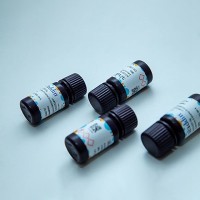Design of Tiling Arrays and Their Application to Bacterial Transcriptome Analysis
互联网
557
Whole-genome sequencing and annotation have clarified total gene number and structure in a variety of organisms. Microarrays have facilitated transcriptome analysis through the use of probes that target a large number of genes based on genomic information. However, microarrays are limited in that they can only examine known or predicted genes; non-annotated genes and noncoding regions cannot be accounted for.
Recent advances in technology have led to the design of tiling arrays, which contain a vastly increased number of spotted probes, and at higher density. Tiling arrays cover the entire genome of a prokaryotic species in an unbiased fashion by designing a large number of probes. Upon hybridization of total RNA, all the transcribed regions of the genome, irrespective of gene annotation, can be detected. As opposed to next-generation sequencing, tiling arrays are cost-effective, easy to analyze, and have been used for experiments as diverse as transcriptome analysis, ChIP-chip, and DNA sequence variation detection. In this chapter, the methods for bacterial tiling array slide design, RNA sample preparation, hybridization, and data analysis are described.









